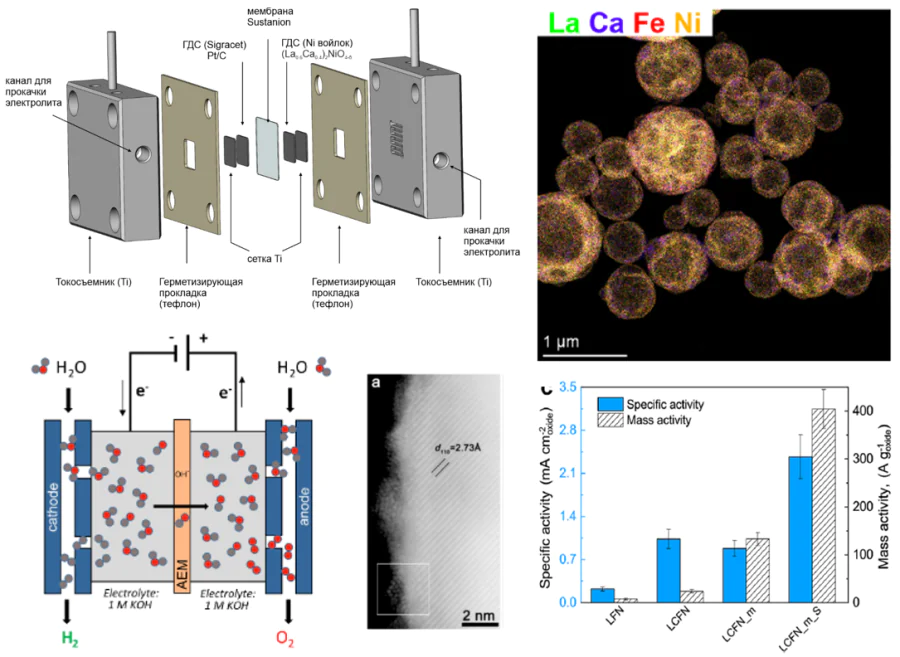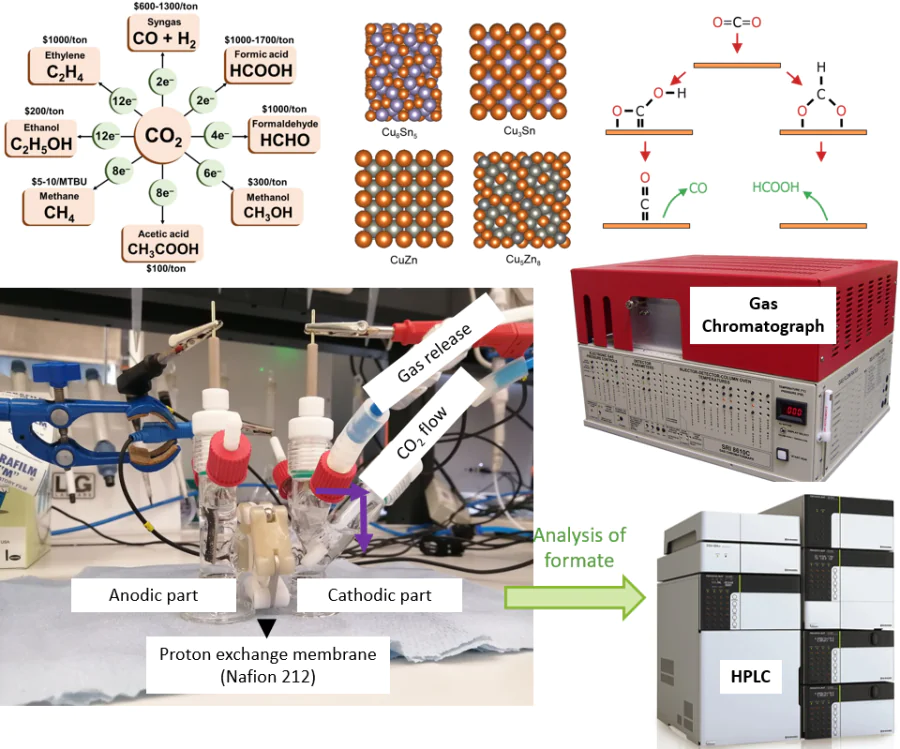Electrochemical processes for green energy
Publications
70
Citations
1 362
h-index
23
Authorization required.

The group specializes in studying the mechanisms of accumulation and conversion of electrochemical energy that will help transition from a fossil fuel-based economy to renewable energy sources. The main areas of work are the development of electrocatalysts and concepts of electrolyzers for the production of "green hydrogen", as well as the electrochemical conversion of carbon dioxide into products with high added value.
- Powder X-ray diffraction
- Scanning electron microscopy (SEM)
- Electrochemical impedance spectroscopy
- Electrochemical research, including operando diffraction and spectroscopic experiments
- Electrochemistry
- Transmission Electron Microscopy (TEM)
Eduard Levin
Researcher

Sergei Porokhin
Junior researcher
Ruslan Faizullin
PhD student

Alena Komayko
PhD student
Margarita Belokozenko
PhD student
Aleksandr Kokin
PhD student
Pavel Sinitsyn
PhD student
Maksim Abakumov
PhD student
Dmitriy Morozov
Student
Edita Atoian
Student

Victoria Chertkova
Student
Vladislav Maev
Student

Andrey Dyakonov
Student
Research directions
Development of electrocatalysts and electrolyzers for high-efficiency alkaline electrolysis
+

The energy efficiency of the production of electrolytic "green" hydrogen, an environmentally friendly fuel within the framework of the hydrogen energy concept, is largely determined by the design and principle of operation of the electrolyzer. Our group is working on the development of electrocatalysts and other components for both the most modern "gas-free" alkaline electrolyzers with anion exchange membranes and polymer separators, as well as fundamentally new types of electrolyzers ("separated" membrane-free electrolyzer, electrolyzer with anodic hydrogen release reaction, etc.).
In recent years, our group has developed electrocatalysts for the reaction oxygen extraction based on mixed complex oxides (such as (La0.6Ca0.4)2NiO4-δ and La0.6Ca0.4Fe0.7Ni0.3O2.9) with a unique porous spherical morphology and high specific surface area using the ultrasonic spray pyrolysis method. Spray pyrolysis technology is easily scaled and allows you to quickly move from grams (laboratory research) to tens and hundreds of grams, which is more relevant for practical applications. Using the developed materials, it was possible to achieve the performance of alkaline cells close to the performance of cells with a proton exchange membrane: current 0.5 A/cm2 at a voltage below 2 V. Currently, the laboratory is working on the development of bi-functional electrocatalysts based on sulfides, nitrides and other classes of compounds.
Bimetallic materials for electroconversion of organic compounds into high-value-added products
+

The electrochemical conversion of carbon dioxide into useful products is one of the promising ways to reduce the anthropogenic impact on climate change on the planet. Our group is working on the search for bimetallic compounds for the conversion of carbon dioxide into C1 (carbon monoxide, formate) and C2, C3 (alcohols, ethylene, ethane, etc.) products, as well as for the reaction of anodic hydrogen separation from aldehyde solutions. The research focuses both on the synthesis and characterization of new bimetallic electrocatalysts, and on the study of processes occurring on the surface under electrolysis conditions (segregation of elements, selective dissolution, morphological changes, etc.).
Publications and patents
Found
Nothing found, try to update filter.
2024
—
2026
| Никитина Виктория Андреевна
Lab address
Москва, Большой бульвар, 30, стр. 1
Authorization required.






